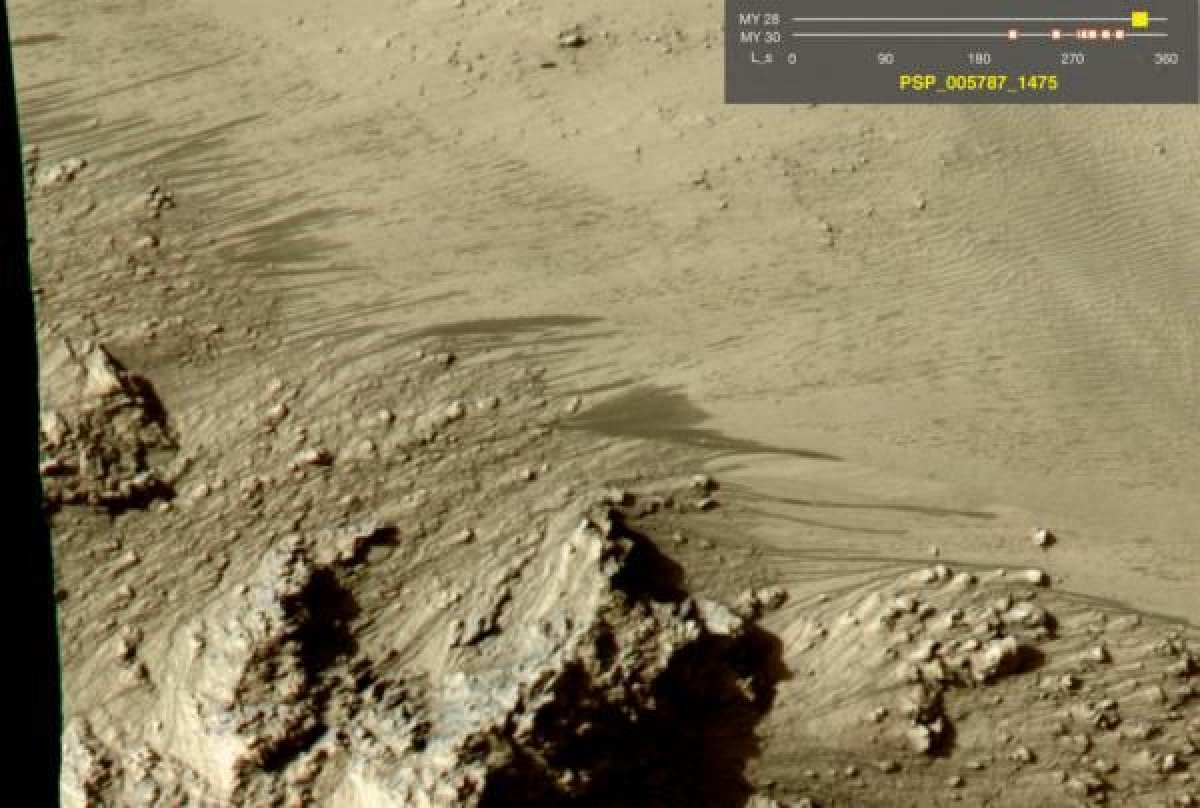
In September 2015, NASA made a groundbreaking announcement—that Mars had liquid water flowing on its surface.
Now, a team of scientists from the U.S. Geological Survey (USGS) has reinterpreted their findings and say the surface features are, in fact, likely to be avalanches of sand and dust.
Their study, published in the journal Nature Geoscience, re-examines the initial data from NASA that looked at the Recurring Slope Lineae, or RSL. This area is a narrow, sloping surface where the features appear to be darker than the rest of their surroundings. They were found to fade and reappear at regular intervals, returning during the warmest time of the year.
This led scientists to believe they represented liquid water flows—ice would melt as the sun warmed the seemingly barren Red Planet.
When the streaks were first discovered, NASA astronaut and associate administrator John Grunsfeld said: "Our quest on Mars has been to 'follow the water,' in our search for life in the universe, and now we have convincing science that validates what we've long suspected. This is a significant development, as it appears to confirm that water—albeit briny—is flowing today on the surface of Mars."
The announcement generated huge excitement at the time—the implications of such a finding increased the likelihood that life once existed, and still could exist, on Mars.
The latest findings dash such hopes. "We've thought of RSL as possible liquid water flows, but the slopes are more like what we expect for dry sand," USGS scientist Colin Dundas, lead author of the new study, said in a statement. "This new understanding of RSL supports other evidence that shows that Mars today is very dry."
Findings showed the RSL slopes are identical to areas where the movement of sand dunes causes these features to appear. The scientists say water is highly unlikely to be responsible—the amount of water required does not correspond to what the data is showing. Plus they say it is highly unlikely that water is only produced at the top of slopes—it should also appear on lower slopes too.

The findings do not rule out the possibility of liquid water on Mars and that it could play a role in the movement of dust and sand—potentially initiating the avalanches the scientists suggest are responsible for the features.
Jim McElwaine, from the Planetary Science Institute and co-author on the paper, said: "The RSL on Mars behave in a similar way to laboratory experiments on Earth. What is still not understood is where the supply of fresh material comes from, though we do have some speculative ideas."
Dundas added: "We've thought of RSL as possible liquid water flows, but they seem to act more like dry sand. This suggests that the surface of Mars is quite dry today." The RSL appear seasonally, and appear to exist only on Martian slopes steep enough for dry grains to descend as they do on faces of active dunes.
Uncommon Knowledge
Newsweek is committed to challenging conventional wisdom and finding connections in the search for common ground.
Newsweek is committed to challenging conventional wisdom and finding connections in the search for common ground.
About the writer
Hannah Osborne is Nesweek's Science Editor, based in London, UK. Hannah joined Newsweek in 2017 from IBTimes UK. She is ... Read more
To read how Newsweek uses AI as a newsroom tool, Click here.








